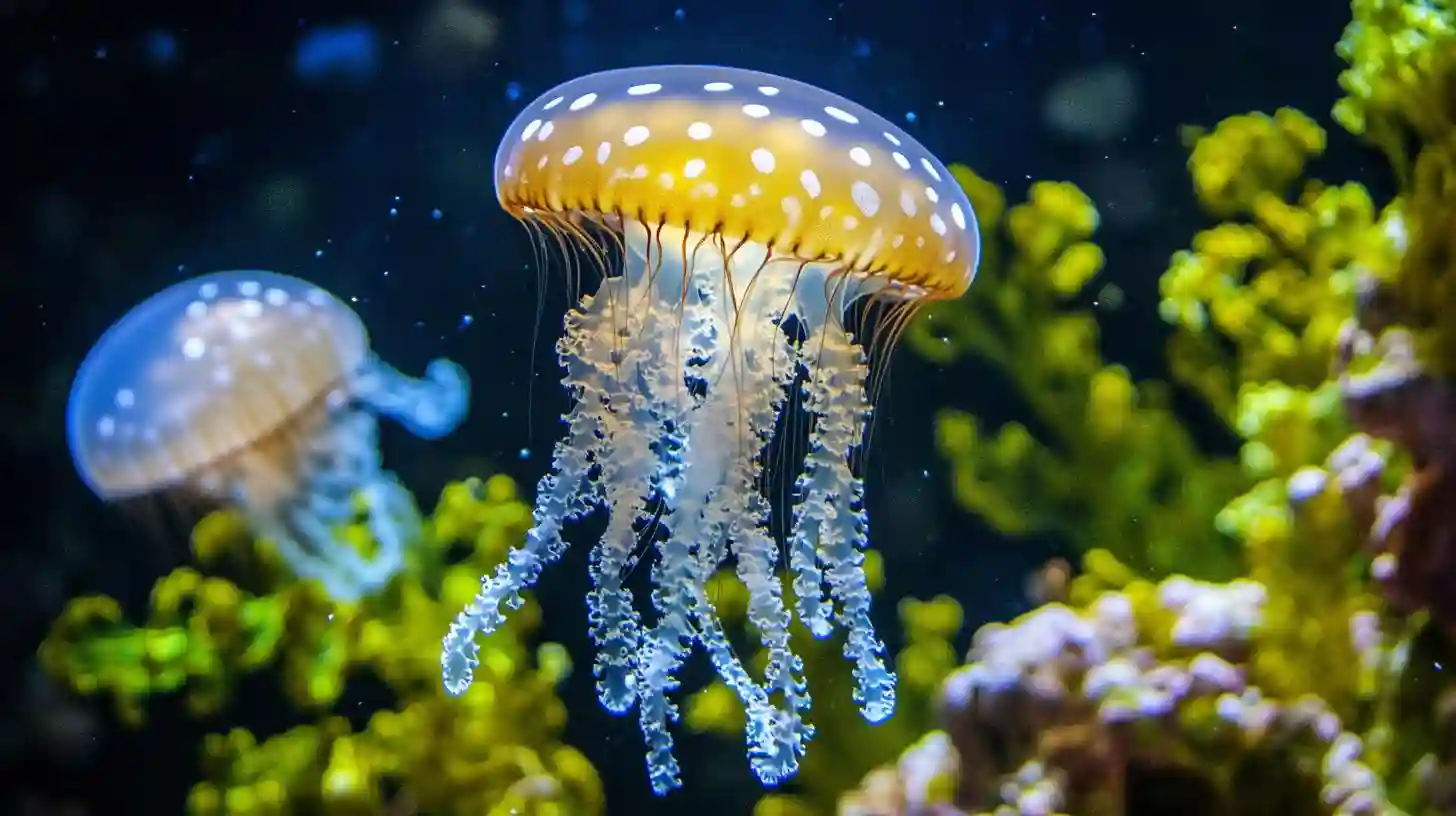
The jellyfish, a creature often perceived as drifting and fragile, is a fascinating organism that embodies the complexity of marine life. With their translucent bodies and mesmerizing movements, jellyfish might seem simple at first glance, but their behaviors and biology reveal intricate adaptations suited for survival in the ocean’s depths. These fascinating invertebrates belong to the phylum Cnidaria, which also includes corals and sea anemones. Their body structure, a gelatinous and bell-shaped medusa, allows them to float gracefully through the water, pulsating rhythmically to propel themselves forward. Despite their simplicity, jellyfish have been around for millions of years, thriving in oceans from the surface to the abyss.
One of the most intriguing aspects of jellyfish is their unique method of movement. They primarily travel by contracting their bell-shaped bodies, forcing water out and allowing the jellyfish to propel themselves. This method of locomotion is energy-efficient, as it makes use of the current and tides, letting jellyfish drift long distances while consuming minimal energy. Despite their simplistic approach to movement, jellyfish exhibit various swimming patterns that can be observed depending on factors such as environmental conditions, species, and even the availability of prey. They can also respond to stimuli, exhibiting behaviors that suggest a level of awareness despite the absence of a centralized nervous system.
Another remarkable feature of jellyfish is their ability to capture prey. Armed with specialized cells known as cnidocytes that contain stinging structures called nematocysts, jellyfish can immobilize small marine animals such as fish larvae and zooplankton. When triggered, these stinging cells deliver toxins to potential prey, allowing the jellyfish to consume organisms that would otherwise be difficult to capture. Some species can even deploy a cocktail of toxins, particularly when threatened or while hunting. The variety in their hunting strategies showcases their adaptability in different environments and feeding conditions.
Jellyfish also exhibit fascinating reproductive strategies. Many species alternate between sexual and asexual reproduction depending on environmental cues. During favorable conditions, jellyfish can reproduce sexually, releasing sperm and eggs into the water column, leading to the formation of larvae. This larval stage is an important part of their life cycle, allowing them to disperse and colonize new areas. In contrast, under unfavorable conditions, jellyfish can reproduce asexually by budding, ensuring the survival of the species even when external circumstances are not ideal. This remarkable flexibility speaks to their long-term success as a species in diverse marine environments.
Interestingly, jellyfish can also impact their ecosystem profoundly. As both predators and prey, they play a vital role in maintaining the balance of the marine food web. Jellyfish consume vast amounts of plankton, which helps regulate populations of these organisms, while also serving as a food source for larger marine animals like sea turtles and certain fish species. Their blooms, which can occur due to changes in ocean temperature and nutrient levels, can disrupt local ecosystems. These blooms can lead to overgrazing of plankton populations and can even negatively affect fish populations due to competition for food and habitat. The rise in jellyfish populations has sparked concern among scientists and ecologists about the implications for marine biodiversity.
Moreover, jellyfish display fascinating behaviors that suggest a level of social interaction and communication. During large blooms, they often exhibit synchronized swimming patterns, possibly influenced by environmental factors such as currents or the presence of prey. There is ongoing research into the ways jellyfish communicate with each other, particularly in relation to their reproductive behaviors and responses to environmental stressors. The fluidity of their movements and the beauty of their bioluminescence often captivate observers, leading to further interest in their behaviors and ecological roles.
As we explore these enigmatic creatures, we continuously uncover the layers of their complexity. Jellyfish challenge our conventional understanding of what it means to be a sentient organism, blurring the lines between simplicity and sophistication. Their adaptive traits, ecological significance, and intriguing life processes provide a rich area for research and discovery. The jellyfish serves as a reminder of the wonders of evolution and the myriad ways life adapts to thrive, even in the most vibrant and unpredictable of environments. With ongoing research and interest in their biology, jellyfish will continue to reveal their secrets, inviting us to delve deeper into the intricate tapestry of marine life.